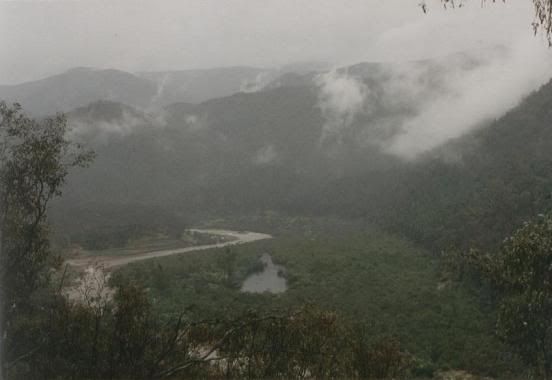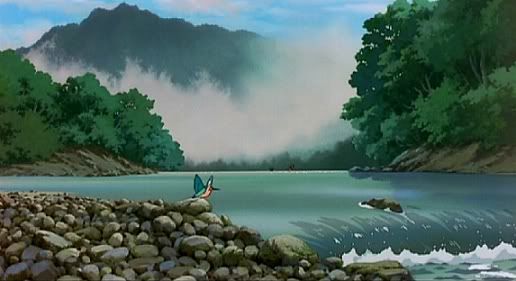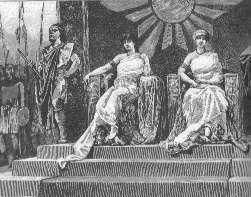McKillops Bridge
McKillops Bridge is the most famous of Errinundera's populous northern cities. The name refers to the great bridge that spans the Snowy River at this point. The bridge itself is named after its designer - the revered engineer, philosopher and scientist, makirrup.
| McKillops Bridge | ||||||||
|---|---|---|---|---|---|---|---|---|
Liberation: 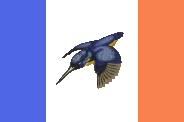 Milosis: Milosis: 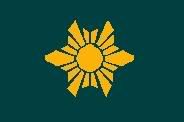
| ||||||||
|
Contents
Location
Built on the banks of the grand Snowy River, which has its headwaters in nations to the north, McKillops Bridge is the usual entry point for visitors to Errinundera.
When you arrive at the docks the first of many surprises awaits you. There are no border controls. Movement in and out of Errinundera is totally unrestricted. The only barrier to your entry is an enormous receptacle and the following sign:
Please leave all meat, leather, guns and cars in bin provided.
</div>Most visitors happily comply. The Errinundrian sniffer wombats are legendary.
McKillops Bridge has been built on a section of the river that has bent around to flow towards the north again, before looping around again to continue its journey south to the sea. With the western side of the city in the eastern half of the country and the eastern side in the western half, visitors are easily confused. That’s Errinundera for you – always contrary.
Despite the fertility of the great river, this region of Errinundera is in rainshadow so you will find no sign of the famous rainforests of the central plateau. Instead the landscape is dominated by white and black cypress pines. As these are quite unsuitable as house trees, the Bridge folk live in ground houses or in caves built into the cliffs along the river.
Appearance
Sixty metre granite cliffs dominate the western bank here in McKillops Bridge. (Remember, this is in the eastern side of the country). The eastern bank is flat. Connecting the top of the cliff to the opposite bank is the centuries old pride of the city, a staircase 30 metres broad, spanning the width of the river and supported by a pair of beautifully proportioned ellipses. At the top of the staircase that gives the city its modern name is the palace of the former royal family. A wide avenue leads from the red granite palace to the beautiful white Star Temple, home of a religious sect that used to hold Errinundera in its thrall. The palace and temple are now national museums.
The Upper City: Milosis
From an account of the first view of Milosis by British explorers
...Presently the wide river gave a sweep, and when it did so an exclamation of astonishment and delight burst from our lips as we caught our first view of the place that we afterwards knew as Milosis.
At a distance of some five hundred yards from the river's bank rose a sheer precipice of granite, two hundred feet or so in height, which had no doubt once formed the bank itself - the intermediate space of land now utilized as docks and roadways having been gained by draining, and deepening and embanking the stream.
On the brow of this precipice stood a great coliseum of the same granite that formed the cliff, built on three sides of a square, the fourth side being open. At the back of the coliseum the town sloped gently upwards to a flashing building of white marble, crowned by a golden dome which we had already observed. The city was, with the exception of this one building, entirely built of red granite, and laid out in regular blocks with splendid roadways between. So far as we could see also the houses were all one-storied and detached, with gardens round them, which gave some relief to the eye wearied with the vista of red granite. At the back of the coliseum a road of extraordinary width stretched away up the hill for a distance of a mile and a half or so, and appeared to terminate at an open space surrounding the gleaming building that crowned the hill. But right in front of us was the wonder and glory of Milosis - the great staircase to the coliseum, the magnificence of which took our breath away. Let the reader imagine, if he can, a splendid stairway, sixty-five feet from balustrade to balustrade, consisting of two vast flights, each of one hundred and twenty-five steps of eight inches in height by three feet broad, connected by a flat resting-place sixty feet in length, and running from the coliseum on the edge of the precipice down to meet a waterway or canal cut to its foot from the river. This marvellous staircase was supported upon a single enormous granite arch, of which the resting-place between the two flights formed the crown; that is, the connecting open space lay upon it. From this archway sprang a subsidiary flying arch, or rather something that resembled a flying arch in shape, such as none of us had seen in any other country, and of which the beauty and wonder surpassed all that we had ever imagined. Three hundred feet from point to point, and no less than five hundred and fifty round the curve, that half-arc soared touching the bridge it supported for a space of fifty feet only, one end resting on and built into the parent archway, and the other embedded in the solid granite of the side of the precipice.
This staircase with its supports was, indeed, a work of which any living man might have been proud, both on account of its magnitude and its surpassing beauty. Four times, as we afterwards learnt, did the work, which was commenced in remote antiquity, fail, and was then abandoned for three centuries when half-finished, till at last there rose a youthful engineer named McKillop, who said that he would complete it successfully, and staked his life upon it. If he failed he was to be hurled from the precipice he had undertaken to scale; if he succeeded, he was to be rewarded by the hand of the king's daughter. Five years was given to him to complete the work, and an unlimited supply of labour and material. Three times did his arch fall, till at last, seeing failure to be inevitable, he determined to commit suicide on the morrow of the third collapse. That night, however, a beautiful woman came to him in a dream and touched his forehead, and of a sudden he saw a vision of the completed work, and saw too through the masonry and how the difficulties connected with the flying arch that had hitherto baffled his genius were to be overcome. Then he awoke and once more commenced the work, but on a different plan, and behold! he achieved it, and on the last day of the five years he led the princess his bride up the stair.
</div>The Lower City: Liberation
As cars have long been banned in Errinundera, every street is little more than a footpath and a tramline with a narrow band of garden in between. The trams, always free, are small, not much bigger than a pick up truck, and carry about 12 people. No matter where you are, one comes along every 3 minutes or so. Some are quite dilapidated and they could be cleaner. They suffer from frequent mechanical and electrical failures. No problem. The driver and passengers jump out and lift the tram off the tracks so that there isn’t any hold up for following vehicles. There it sits until a mechanic or electrician comes along and fixes it. The driver then finds volunteers to put it back on the tracks and away they go. The trams don’t go very fast and the occasional accident seems to amuse all and sundry.
Much of the lower city is built on a chequerboard pattern with buildings and parks on alternate squares. Nobody likes to travel far to shops or work so there are no huge suburban shopping malls or towering glass business districts. Indeed, there is something of a French feel. Homes, shops, cafes and workplaces all face onto a park that is lovingly cared for. Corner buildings are highly prized and are frequently built with verandahs on two sides so as to provide a view of both parks.
In the centre of all the parks are an amphitheatre and a large viewing screen. For any important broadcast the McKillopians (pronounced Macka – lowpians) gather in the park opposite their house to view what is showing. On tables all around will be champagne, coffee, cakes, cups, glasses, plates and cutlery. Everybody brings something and shares it with everybody else.
The pet hate of all Liberationists are the Milosians, considered to be boorish and inbred. The tree people of the central plateau aren’t rated much better – they are universally referred to as airheads, presumably for their perceived intellectual abilities and for their habit of living in tree canopies.
History
</div>Until the 1905 revolution the city was known as Milosis. Indeed the upper section of the city still goes by that name. The royal family, priests, soldiers and government officials lived on the upper bank and artisans and workers lived on the lower bank. In 1889 British explorers arrived in Errinundera. One of them seduced the then queen, athpelyn, and was anointed king. A venal and arrogant man, curtu was despised by Errinundrians. Civil war broke out with resistance led by the queen’s younger sister, siaros. This culminated in the defeat and death of the younger sister at the Battle of the Pass near Deddick and the subjugation of a rebellious nation by the queen and her usurper husband. Resistance continued, especially in the dense forests of the plateau where the queen’s army was ill equipped to fight. Finally, following a massacre of thousands of protesters upon the bridge, the army itself revolted and liquidated most of the royal family. A puritanical government took control and moved the capital to First Creek Falls. It, in turn, collapsed in 1941 to be replaced by the current libertarian regime.
Customs and Attitudes
There is mild resentment that political power has resided in First Creek Falls for the last century. Bridge Folk see their city as the cultural, historical and intellectual capital of the nation in much the same way St Petersburg natives would view their city in relation to Moscow. The rivalry is not bitter but it is an undercurrent that is always tugging away. The Falls Folk are airheads (they live in trees) and the Bridge Folk are blockheads (the live in rectangular stone houses).
Visitors are free to travel about McKillops Bridge. Walk into any house – you will be most welcome. You’ll also get a hearty, but stodgy vegetarian meal: lentil soup or nutloaf. As the welcoming sign on the docks suggest, the great curses of modern civilization, guns and cars, are absent here. A comprehensive tram and monorail network will take you anywhere you care to go. And they’re free.
Sure, they have a tendency to ban things. It’s probably a relic of their puritanical past. So along with guns and cars you won’t find cigarettes, gambling, meat or leather, police or armies. These things are considered quite nasty. On the other hand, their drug raves are internationally famous and their attitude to nudity and sex is quite relaxed. If sex and leather is your thing they have no shortage of substitutes for you. It’s all a question of what is harmful. You may also be surprised to discover that private enterprises have not been banned. They just tax them to buggery.
If you don’t like the way they run things that’s OK, just hop up on the home of their national leader in First Creek Falls, willd, and tell him what you think.
Football Grounds
Liberation Stadium
The Kingfishers are the most successful team in the national competition and, until the recent completion of their new ground, played their home games at the stadium of their cross river rivals, Milosis. Tiring of playing hosts to their more successful lodgers the White Guards evicted the Kingfishers. Sensing the opportunity to cripple the competition leaders, the other clubs refused to share their grounds forcing the Kingfishers to forfeit almost all their home games for one season. The Liberation Stadium has now been completed and the dominance of the association's overlords can now be renewed. Second only in capacity to the B.C.G. the Liberation Stadium is further evidence that the great northern cities of Errinundera are the nation's football powerhouses.
Milosis Coliseum
The home ground for the Milosis White Guards is the Milosis Coliseum, adjacent to the cliff-top palace. This ancient three-sided granite structure has been refurbished to bring it up to the standards of a World Cup stadium. Now accommodating 41,000 fans, it has all facilities expected of a modern stadium, including giant colour screens, heated seating, corporate boxes and state of the art player amenities.
The unusual feature of the Milosis Coliseum is that the pitch goes almost to the edge of the cliff affording a dizzying view for players and spectators alike. Fans in the top row seats can see far into the west of Errinundera. A secure mesh fence prevents people and players from falling over the edge.
News Media
There are two daily newspapers.
- Broadsheet: McKillops Bridge New Statesman
- Tabloid: McKillops Bridge Sun Herald
References
- Henry Rider Haggard - "Allan Quatermain" (copyright expired - the archival description is drawn from this novel)
- Project Gutenberg's "Allan Quatermain": http://onlinebooks.library.upenn.edu/webbin/gutbook/lookup?num=711
